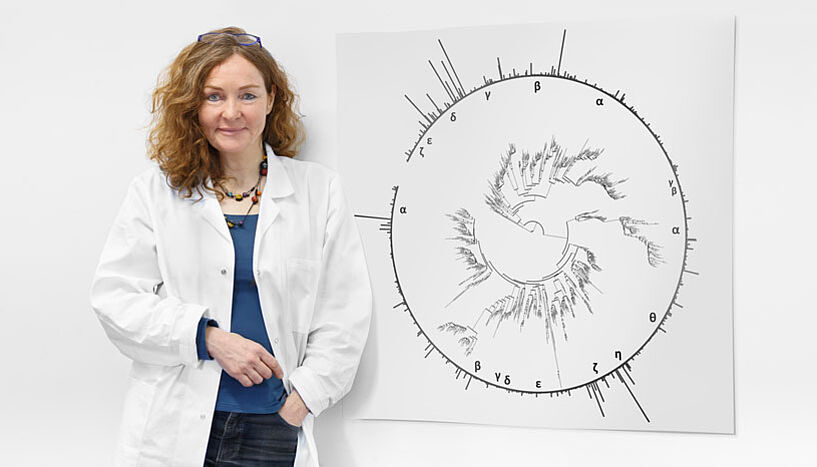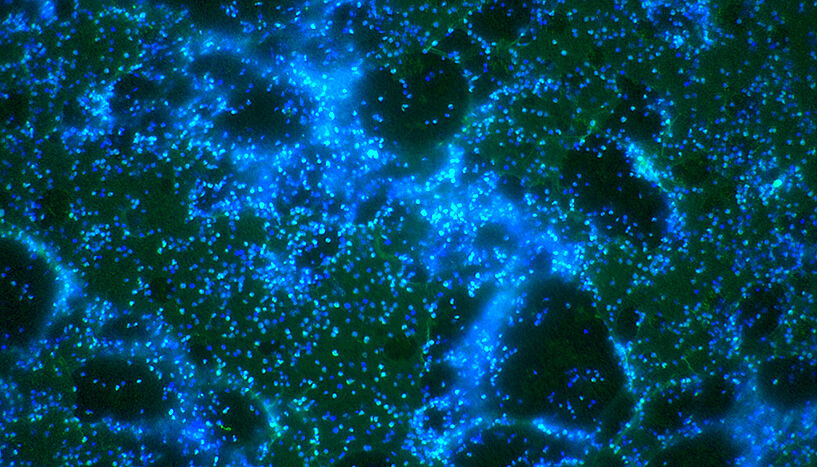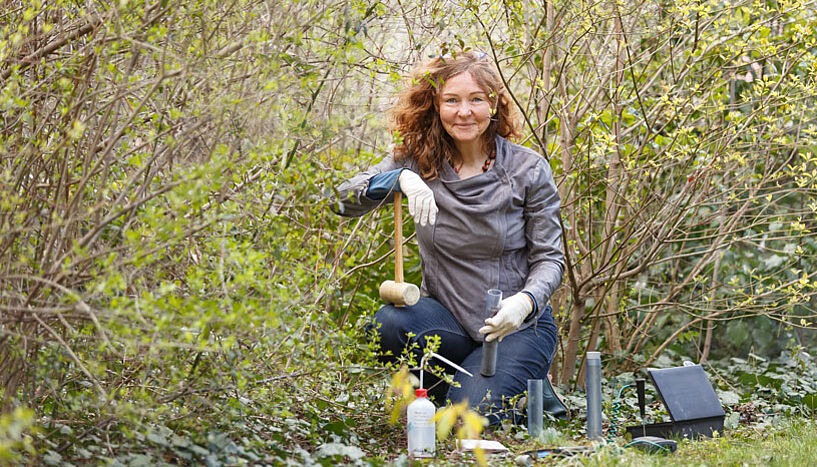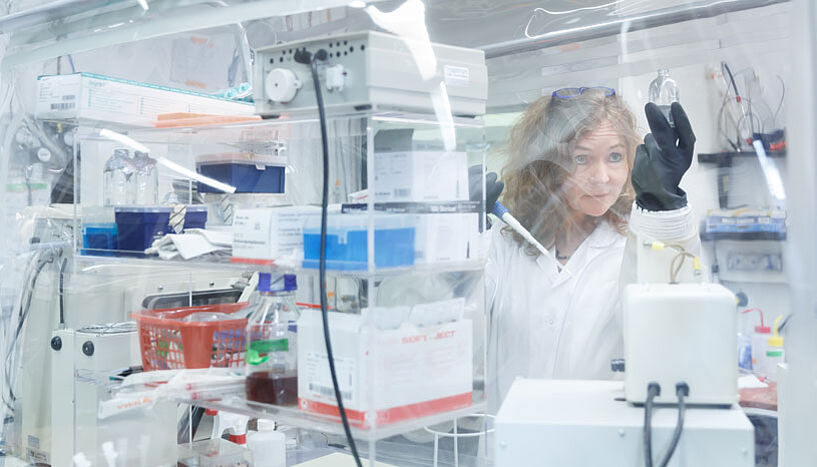Which genes are crucial for the energy metabolism of Archaea?
14. November 2016Ammonia oxidizing Archaeon "Nitrososphaera viennensis" is further deciphered
Microorganisms like bacteria and archaea play an indispensable ecological role in the global geochemical cycles. A research team led by ERC prizewinner Christa Schleper from the Department of Ecogenomics and Systems Biology at the University of Vienna succeeded in isolating the first ammonia-oxidizing archaeon from soil: "Nitrososphaera viennensis" - the "spherical ammonia oxidizer from Vienna". In the current issue of the renowned journal PNAS, the scientists present new results: They were able to detect all proteins that are active during ammonia oxidation – another important piece of the puzzle for the elucidation of the energy metabolism of Archaea.
Microorganisms are still often perceived only as disease promoters, although the vast majority of them plays an important ecological role in the global geochemical cycles: without the metabolic activities of the smallest of all living organisms, bacteria and archaea, life on Earth would not be possible. These microorganisms play a central role in the large geochemical cycles by decomposing organic matter and returning the resulting building blocks to the atmosphere or making them available for new life. It is now also known from microbiome research that our gut bacteria affect not only our general health, but even our psyche.
But what about Archaea? For a long time, this second group of microorganisms, which beside bacteria belong to the prokaryotes, has only been found in hot springs and other extreme locations. Only ten years ago the so-called Thaumarchaea were discovered in great numbers in the sea water of all oceans, but also in soils and lakes. These archaea oxidize ammonia to nitrite and due to their global abundance are obviously involved in this important step of the nitrogen cycle.
The first officially described strain of such an archaeon is "Nitrososphaera viennensis". It stems from the garden of the university center Althanstraße in the 9th district of Vienna, and because of its form and origin is called "Nitrososphaera viennensis", the "spherical ammonia oxidizer from Vienna". A single cell has a diameter of only 0.8 micrometres, thus 0.8 millionth of a meter.
This scientific breakthrough in 2011 was the prerequisite for Christa Schleper and her team to investigate not only the individual genes, but also the proteins of an ammonia-oxidizing archaeon from soil. "As the organism grows only to very low cell densities, we had to run large fermenters to obtain enough biomass," explains Christa Schleper. The scientists have now been able to investigate which of the genes of this model organism are present in all thaumarchaeota and which are active during ammonia oxidation.
"Our study allows hypotheses to be developed about the process of ammonia oxidation which can now be verified experimentally: Because until today the energy metabolism of these archaea, which belong to the most frequent microorganisms on our planet, has not yet been elucidated," said the microbiologist.
Furthermore, the new study provides for the first time clues for special adaptations of the Archaea from soil. These include their ability to form biofilms and to interact with other microorganisms. "A better understanding of the archaea living in the soil is of great ecological importance. Since Archaea produce less greenhouse gases than Bacteria during the oxidation of ammonia, it is important to learn under which conditions they can be propagated preferentially in agricultural soils," explains Christa Schleper. In the future, exploration of Nitrososphaera viennensis could also gain medical relevance, since closely related strains are found on the human skin.
Publication in "PNAS":
Melina Kerou, Pierre Offre, Luis Valledor, Sophie Abby, Michael Melcher, Matthias Nagler, Wolfram Weckwerth, and Christa Schleper: Proteomics and comparative genomics of Nitrososphaera viennensis reveal the core genome and adaptations of terrestrial archaeal ammonia oxidizers, In: PNAS Online Early Edition, 14. November 2016
DOI: www.pnas.org/cgi/doi/10.1073/pnas.1601212113
Wissenschaftlicher Kontakt
Univ.-Prof. Dipl.-Biol. Dr. Christa Schleper
Department für Funktionelle und Evolutionäre ÖkologieUniversität Wien
1030 - Wien, Djerassiplatz 1
+43-1-4277-76510
+43-664-60277-76510
christa.schleper@univie.ac.at
Univ.-Prof. Dr. Wolfram Weckwerth
Department für Funktionelle und Evolutionäre ÖkologieUniversität Wien
1030 - Wien, Djerassiplatz 1 (UBB)
+43-1-4277-765 50
+43-664-60277-765 50
wolfram.weckwerth@univie.ac.at
Rückfragehinweis
Mag. Alexandra Frey
Media Relations ManagerUniversität Wien
1010 - Wien, Universitätsring 1
+43-1-4277-17533
+43-664-8175675
alexandra.frey@univie.ac.at
Downloads:
Christa_Schleper_2_b.jpg
Dateigröße: 4,16 MB
Biofilm2.TIF
Dateigröße: 5,32 MB
Christa_Schleper_1_02.jpg
Dateigröße: 7,93 MB
Christa_Schleper_4_02.jpg
Dateigröße: 5,07 MB




